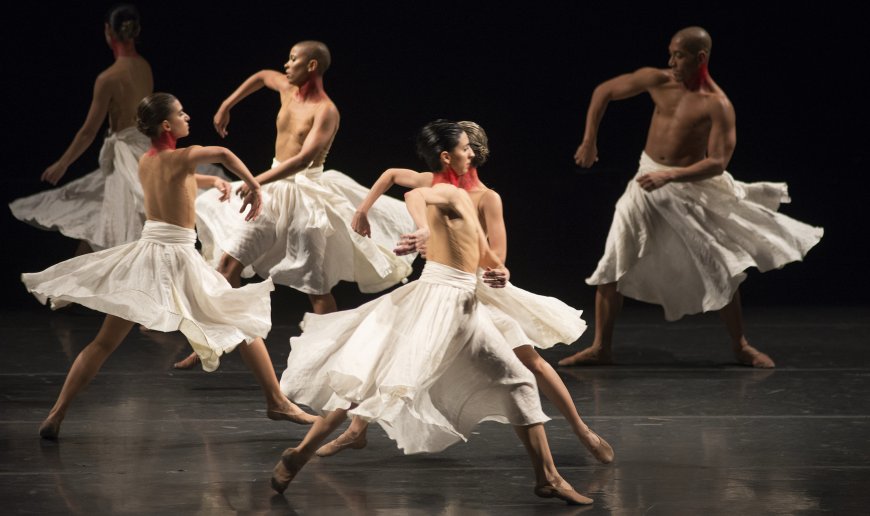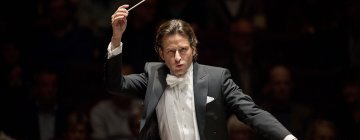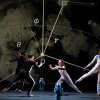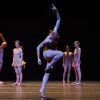
The famed Brazilian dance company Grupo Corpo, founded in 1975, continues to push its own artistic limits. In a rare U.S. tour, the troupe stops at Cal Performances in Berkeley April 25–26 and The Music Center in Los Angeles May 2–4. The inside word is drop everything to see these dancers.
Lead choreographer Rodrigo Pederneiras, in a Zoom chat with SF Classical Voice, reflected on Grupo Corpo’s history and success, starting with the company’s early days. “We were a group of friends that used to study English and dance,” he said. “In Belo Horizonte, where we lived, there wasn’t a professional dance company, so we said, ‘We need to create our own company.’ But we didn’t have anything — no money, no name. We began to ask for [loans] from the banks to start.
“It’s a very [unusual] story because [the core of our group] was six siblings,” Pederneiras continued, explaining how, as the burgeoning troupe needed space, he and his brothers and sisters persuaded their parents to move out. “And they did. They rented an apartment, and we started the company at the house where I was born. We [had] all studied ballet and modern dance; [Grupo Corpo] wasn’t contemporary dance at the time. The idea was to create a really great ballet.”

With Paulo Pederneiras as artistic director, the young company engaged Argentine choreographer Oscar Ariaz, Brazilian singer-songwriter Milton Nascimento, and Brazilian poet-lyricist Fernando Brandt for this new production. The result was 1976’s Maria Maria, a stunning success that Grupo Corpo performed for six years and toured to 14 different countries. Meanwhile, the troupe began presenting other new works as well.
“From the 1980s to the 1990s,” continued Rodrigo Pederneiras, “we used classical composers [for our dance scores] — Mozart, [Frédéric] Chopin, [Heitor] Villa-Lobos, and [Richard] Strauss. I asked my brother Paulo, ‘Why don’t [we go back to] inviting composers to create for us?’ In 1992, we had the premiere of 21 [with music by Marco Antônio Guimarães and Uakti], one of the pieces we are performing in Berkeley and Los Angeles. Since then, almost all of the pieces we’ve created have had music specially composed for us. When we invite a composer, they are free to do what they want.”
It’s part of the company’s way of working: Grupo Corpo doesn’t give composers a theme or direction, only a timing. The Pederneiras brothers like to be influenced by the music, not the other way around.
“That’s why [there’s] such a wide range of different sounds, because the composers are completely free,” Rodrigo Pederneiras said. “You’re confident that whatever they create, you can work with. You never know what gets born. You get the kid; you don’t know who they’re going to be.”
On its current tour, Grupo Corpo is also set to perform Gira (2017), which is inspired by the Afro-Brazilian religious traditions of Candomblé and Umbanda. In Umbanda rituals, connections to orixás (spirits) are made through mediums, who chant and dance while spinning in circles. The music for Gira is by São Paulo band Metá Metá and combines instrumentals and ritual chanting with animal cries and birdcalls.
“Since the beginning of the 1980s,” Rodrigo Pederneiras said, “I’ve assumed the choreography, and Paulo has done the lights and sets. It’s a family business. My son Gabriel has worked for more than 20 years with us, now as a technician, and he’s also started to create lighting. We invited my daughter-in-law to choreograph with me because I’m 70 years old and we need to think about the future of the company. She worked with us as a dancer for 12 years. There’s a certain kind of security when you keep it in the family. We prefer to call it the Grupo Corpo Family, [which includes the] many, many other people who [have been] with us since 1975. Yes, they are still here.”




